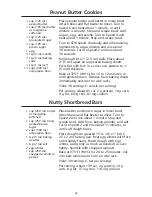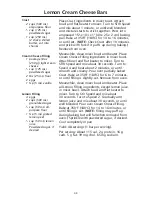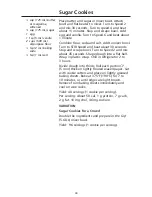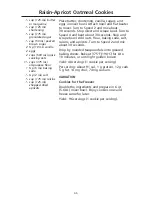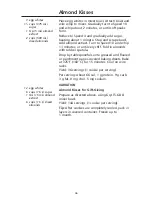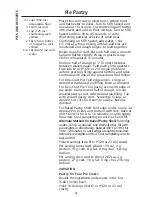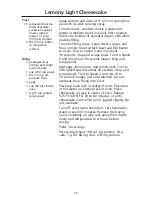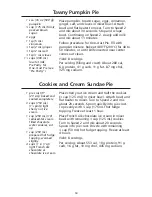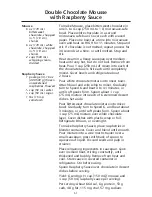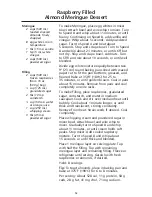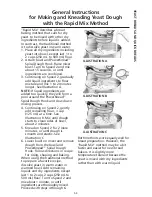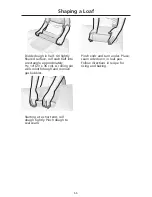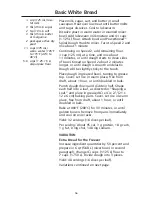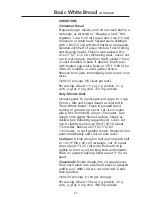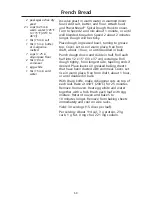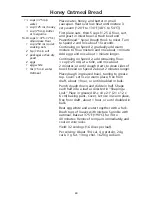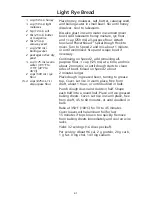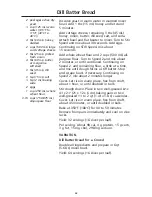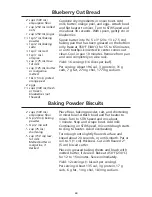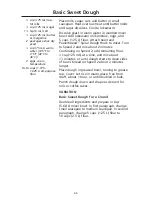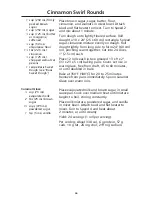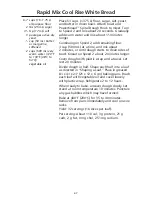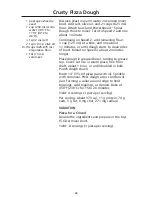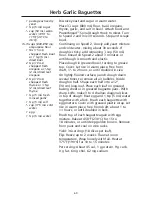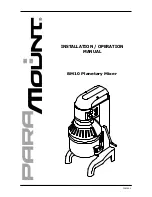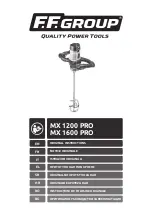
54
Bread Making Tips
Making bread with a mixer is quite
different from making bread by
hand. Therefore, it will take some
practice before you are completely
comfortable with the new process.
For your convenience, we offer
these tips to help you become
accustomed to bread making the
KitchenAid
®
brand way.
• Start out with an easy recipe,
such as Basic White Bread, see
“Basic White Bread,” until you are
familiar with using the
PowerKnead™ Spiral Dough
Hook.
• ALWAYS use the PowerKnead™
Spiral Dough Hook to mix and
knead yeast doughs.
• Use Speed 2 to mix or knead
yeast doughs. Use of any other
speed creates high potential for
stand mixer failure.
• Do not use recipes calling for
more than 14 cups (3.3 L) all-
purpose flour or 8 cups (2 L)
whole wheat flour when making
dough with a 6 qt (5.68 L) mixer.
• Do not use recipes calling for
more than 12 cups (3 L) all-
purpose flour or 6 cups (1.4 L)
whole wheat flour when making
dough with a 5 qt (4.73 L) mixer.
• Use a candy or other kitchen
thermometer to assure that
liquids are at a temperature
specified in the recipe. Liquids at
higher temperature can kill yeast,
while liquids at lower
temperatures will retard yeast
growth.
• Warm all ingredients to room
temperature to insure proper
rising of dough. If yeast is to be
dissolved in bowl, always warm
bowl first by rinsing with warm
water to avoid cooling of liquids.
• Allow bread to rise in a warm
place, 80°F to 85°F (27°C to 30°C),
free from draft, unless otherwise
specified in recipe.
• Here are some alternative rising
methods to use: (1) The bowl
containing the dough can be
placed on a wire rack over a pan
of hot water. (2) The bowl can be
placed on the top rack of an
unheated oven; put a pan of hot
water on the rack below. (3) Turn
the oven to 400°F (200°C) for
1 minute; then turn it off; place
the bowl on the center rack of
the oven and close the door.
• Cover bowl with waxed paper, if
desired. Always cover with towel
to retain warmth in the bowl and
keep the dough away from drafts.
• Recipe rising times may vary due
to temperature and humidity in
your kitchen. Dough has doubled
in bulk when indentation remain
• Most bread recipes give a range
for the amount of flour to be
used. Enough flour has been
added when the dough starts to
clean sides of bowl. If dough is
sticky or humidity is high, slowly
add more flour, about
¹⁄₂
cup
(125 mL) at a time but do not
exceed recommended flour
capacity. Knead after each
addition until flour is completely
worked into dough. If too much
flour is added, a dry loaf will
result.
• When done, yeast breads and
rolls should be deep golden
brown in color. Other tests for
doneness of breads are: Bread
pulls away from the sides of pan,
and tapping on the top of the
loaf produces a hollow sound.
Turn loaves and rolls onto racks
immediately after baking to avoid
sogginess.
Summary of Contents for 4KB25G1XBU3
Page 179: ......



